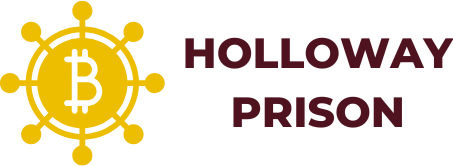In today’s fast-paced work environment, juggling tasks can feel like a circus act without a safety net. Thankfully, the right workplace apps can turn that chaotic juggling into a smooth, seamless performance. Imagine having a personal assistant in your pocket that never takes a coffee break—sounds dreamy, right?
Table of Contents
ToggleOverview of Top Workplace Apps
Selecting effective workplace apps significantly enhances productivity. Teams rely on these tools to manage tasks, communicate, and collaborate effectively. Popular options include task management apps that organize workloads. Software like Trello allows team members to track progress visually, improving transparency.
Communication apps simplify interactions among teams. Slack serves as a central hub for messaging, enabling quick exchanges and file sharing. Using this platform, teams can create channels dedicated to specific projects, ensuring relevant conversations remain organized.
Collaboration tools facilitate real-time teamwork. Google Workspace allows multiple users to edit documents simultaneously. This capability improves efficiency, as team members can contribute without waiting for others to complete their tasks.
Time management apps optimize scheduling and prioritization. Tools like Asana help individuals allocate their time effectively with integrated calendars and project timelines. By visualizing deadlines, teams can prioritize based on project urgency.
Cloud storage solutions ensure accessibility of important files. Dropbox securely stores documents, enabling team members to access them from anywhere. It fosters seamless sharing, particularly for remote teams.
Lastly, integration features enhance productivity further. Many workplace apps offer integrations with each other, allowing seamless transitions between tools. By connecting platforms, teams can streamline their workflows, reducing friction in task completion.
Utilizing top workplace apps fosters a structured environment, ultimately leading to improved collaboration and increased efficiency.
Benefits of Using Workplace Apps
Workplace apps offer a variety of advantages that boost efficiency and streamline operations in any work environment. These tools not only simplify task management but also enhance communication and collaboration among teams.
Increased Productivity
Increased productivity stems from the clear organization and prioritization of tasks. Task management applications like Trello enable teams to visualize their workflows. Visual tracking allows members to stay focused on deadlines and responsibilities. Tools that integrate calendars help users effectively manage their time, ensuring they allocate resources wisely. Real-time updates keep everyone on the same page, eliminating confusion and redundancies. As a result, employees can prioritize tasks and improve overall output.
Enhanced Communication
Enhanced communication transforms how teams interact and share information. Messaging platforms such as Slack create a centralized hub for discussions, which minimizes email overload. File sharing capabilities streamline the process of exchanging documents, which reduces delays. With collaboration tools like Google Workspace, multiple users can edit documents simultaneously. This real-time collaboration fosters a sense of teamwork, increasing engagement and collaboration among members. Effective communication ultimately leads to higher morale and a more cohesive work environment.
Categories of Top Workplace Apps
Workplace apps can be categorized into several key areas, each serving a distinct function that enhances productivity. Understanding these categories helps teams choose the best tools for their needs.
Project Management Tools
Project management tools streamline task allocation and progress tracking. Apps like Trello enable teams to visualize workflows, improving clarity and accountability. Users can create boards and cards to represent tasks, ensuring everyone knows their responsibilities. As projects advance, team members update their progress, enhancing transparency. Additionally, tools such as Asana integrate calendars, which assist in prioritizing tasks based on deadlines. By centralizing project data, these apps create an organized approach to managing team efforts and maintaining momentum.
Communication Platforms
Effective communication platforms eliminate misunderstandings and reduce email traffic. Messaging apps like Slack serve as instant communication hubs, allowing team members to share messages and documents quickly. Groups and channels within these platforms help keep discussions focused on specific topics. Quick access to shared files ensures team members stay in the loop with updates and resources. Video conferencing tools like Zoom complement these platforms by offering virtual meetings, enhancing collaboration regardless of location. This cohesive communication strategy fosters engagement, promoting a more connected work environment.
Time Tracking Applications
Time tracking applications enhance productivity by helping individuals understand how they allocate their time. Tools like Toggl allow users to log hours dedicated to specific tasks, providing insights into time usage. By analyzing these patterns, team members can identify areas for improvement and better prioritize their efforts. Many of these apps offer reporting features that help teams evaluate their overall efficiency. Integration with project management tools further enhances their utility, enabling seamless transitions between tracking time and managing projects. These insights result in more effective scheduling and ultimately improve overall productivity.
Features to Look for in Workplace Apps
Selecting the right workplace app involves considering essential features that enhance user experience and streamline operations. Key aspects help determine the effectiveness of these tools.
User Interface and Experience
A user-friendly interface is vital for workplace apps. Intuitive navigation supports users in performing tasks quickly. Visual elements, such as icons and color coding, improve clarity and reduce confusion. Responsive design across devices ensures accessibility whether on desktops, tablets, or smartphones. Clear onboarding processes help users adapt faster, promoting immediate productivity. Customizability allows teams to tailor the app to their specific needs, enhancing satisfaction and engagement.
Integration Capabilities
Seamless integration capabilities significantly boost functionality in workplace apps. Compatibility with existing tools, such as Slack, Trello, and Dropbox, facilitates efficient workflow. Automation features, like connecting calendars and task lists, reduce manual data entry and save time. Centralized platforms promote easy information access and sharing among team members. APIs enable connectivity between different systems, enhancing overall usability and coordination. Automated data synchronization keeps all platforms updated, ensuring consistency and accuracy in projects.
Embracing the right workplace apps can transform chaotic work environments into streamlined operations. By leveraging tools designed for project management communication and time tracking teams can enhance productivity and foster collaboration. The integration of user-friendly interfaces and customizable features ensures that these apps meet the specific needs of diverse teams.
As organizations continue to adapt to evolving work dynamics investing in effective workplace apps is essential for maintaining efficiency and promoting a positive work culture. With the right tools in place teams can focus on what truly matters achieving their goals and driving success.





